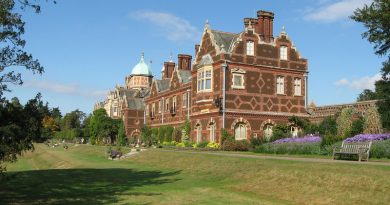Guy Fawkes: Catholics V Protestants
Guy Fawkes was involved in the Gunpowder Plot of 1605, a failed conspiracy to assassinate King James I of England and blow up the House of Lords. The plot was aimed at ending Protestant rule in England and restoring a Catholic monarchy.
Fawkes and a group of conspirators, planned to use gunpowder to destroy the House of Lords during the State Opening of Parliament. Fawkes was tasked with igniting the explosives.
Fawkes was arrested on November 5, 1605, after a tip-off led authorities to search the Parliament buildings. He was tortured and eventually executed for his role in the plot, which made him a symbol of rebellion against the government.
The failure of the Gunpowder Plot is commemorated in the UK on November 5th, known as Guy Fawkes Night or Bonfire Night. Celebrations often involve bonfires, fireworks, and the burning of effigies of Fawkes, reflecting the historical significance of the event.
Fawkes has become a symbol of protest and dissent against oppression. His image and the phrase “Remember, remember the fifth of November” have been used in various cultural contexts, including literature, film, and modern protests.
Guy Fawkes also represents the struggle for religious freedom and the complexities of political dissent, making him a significant figure in British history and culture.
The Gunpowder Plot occurred during a time of significant tension between Catholics and Protestants.Under King James I, who succeeded Queen Elizabeth I, Catholics faced ongoing discrimination and persecution. Although James initially appeared to be more tolerant, many Catholics felt that they were still marginalized and denied their rights.
The conspirators, including Guy Fawkes, were motivated by the hope of restoring Catholicism in England. They believed that by assassinating King James I and replacing him with a Catholic monarch (specifically Princess Elizabeth), they could end Protestant rule and reinstate Catholicism as the dominant faith.
Some conspirators hoped that a successful plot could lead to support from Catholic Spain, which was seen as a potential ally in restoring Catholicism in England.
However their plan failed, leading to severe repercussions for Catholics and further entrenching Protestant dominance in England.
The English Reformation, initiated by Henry VIII in the 16th century, had led to the establishment of the Church of England, breaking away from the authority of the Pope and the Roman Catholic Church.
Various laws were enacted to restrict Catholic practices. The Act of Supremacy of 153 declared the monarch as the Supreme Head of the Church of England, and subsequent laws imposed penalties on those who did not conform.Catholics were barred from holding public office, attending university, and practicing their faith openly.
Stricter penal laws were established, such as the Act of Uniformity of 1559 and the Recusancy Acts, which imposed fines and imprisonment for those who refused to attend Anglican services
Later the English Civil War (1642-1651) further complicated the religious landscape. The conflict pitted Royalists (,many of whom were Catholic, against Parliamentarians who were largely Protestant, exacerbating existing tensions.
Widespread anti-Catholic propaganda portrayed Catholics as treasonous and disloyal. This perception was fueled by fears of foreign influence, particularly from Catholic countries like Spain and France.Many Protestants viewed Catholicism as a threat to their way of life.
Notable figures, such as Jesuit priests, were targeted for their role in promoting Catholicism.
Many Catholics were forced to practice their faith in secret, leading to the establishment of hidden churches and underground communities.
Destination: England




